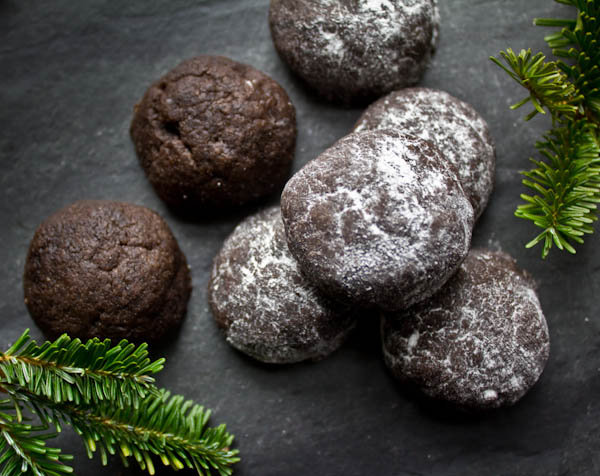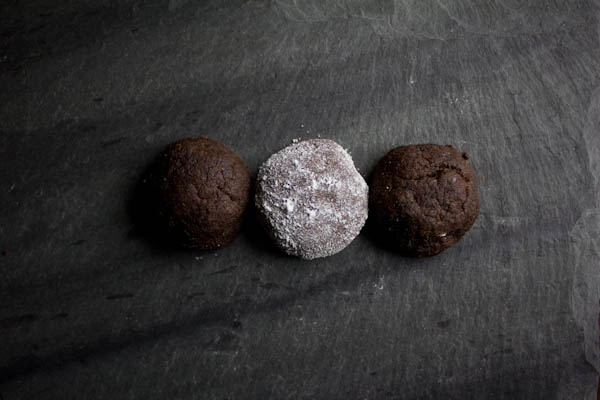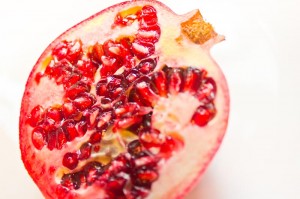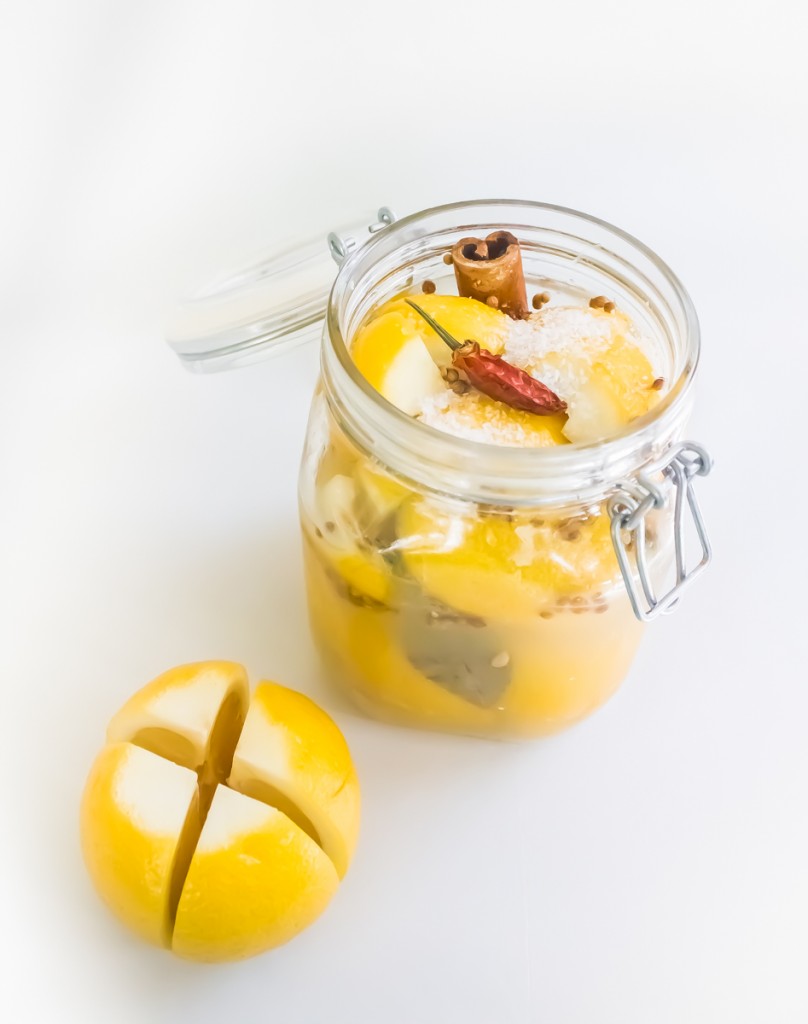 April 1st. The "I think I can, I think I can..." continues. I think I can make it to the end of this relentless Catskill's winter. Right now, even as I type this, one day after we were admiring deep purple crocuses at my mother's for Easter, there are wide swirls of snow flurries mocking me outside the windows over my desk. But the garden seeds have been ordered. Seedlings will be started shortly. And our neon pink rhubarb stalks have just broken through the cold muddy ground. And chives. And oregano. Maybe ramps next. In the meantime, while I am fantasizing about warm weather cooking, getting to take daily advantage of vibrant fresh produce, with their bright colors and refreshing textures, I'm tucking away some other favorite produce, soon to be gone until the late fall. (more…) | ||||||||||||||||
 One year and three days ago, at 3:30 in the afternoon on 11/11/11, I was eating lentil soup. I am able to tell you exactly that, as it was the meal I finished just as my water broke for the birth of my son. Truthfully, it was lentil soup followed by a scoop of my husband’s homemade vanilla bean ice cream, topped with a generous drizzle of David Lebovitz’s perfect hot fudge recipe Standing at the edge of the new parent cliff, really having no idea what the next many weeks would hold for us, I had been furiously putting meals away for days and days. I don’t know what I expected, but my level of anxiety was fairly appropriate. And when I get anxious, I cook. When someone is struggling, I cook. When things seem grim and I have no idea what to do, out come the cookbooks. And so for the very expectant weeks prior, I had been cooking and cooking. Our chest freezer in the basement was a culinary tetris, packed tightly with calories to keep us going in the 3ams of the coming weeks. Quart container after quart container of warming stews, gumbos, and soups were obsessively stacked alongside a half dozen bags containing fifty frozen dumplings each, devotedly hauled home from Chinatown in the city. I may have been facing a month without leaving the house or having both hands free at once, but I was not going down on an empty stomach. I didn’t know who I’d be on the other side of all of this, but I knew I’d still demand great food. Lentil soup has been a comfort food staple for me through most of the very varied episodes of my life. Cheap, simple, high in protein, and even vegetarian—for that twenty-year phase I went through—its sum is definitely more than its parts. And this will always be the last thing I cooked as a person who wasn’t someone’s mom. As soon as it gets dark before quitting time and a tiny chill shimmies under the door, I crave this recipe. And eating it again this year, days before I became a person who is the mom of a one year old, I am brought right back to a year ago, or my lunch break room in graduate school, or the kitchen in my first apartment in New York, and also my tiny dark brown dorm fridge. I look at the photo we snapped just before walking out the door to drive to the hospital, and am astounded by how I feel like I don’t even know those people. But it is indeed me, as is the girl hosting her first dinner party in a studio apartment, or the girl with the giant mug in her window seat in college, all recognizing each other by the smells and tastes of the recipes that make up my life’s cookbook. Happy first birthday darling boy.
| ||||||||||||||||||||||
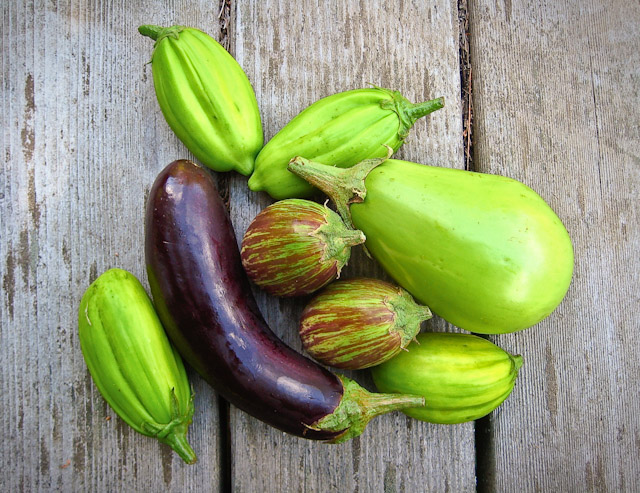 By this point in the summer I definitely get into a rut and prepare fruit and vegetables from the gardens and market in almost the same ways daily. Not that that is a bad thing, as with produce this amazing, at the height of their season, there is often very little that can improve upon them. A little grilling here, a little lightly dressed salad there, a little sautéing tossed with fresh pasta over there… Vegetable and fruit roasting feels like almost too basic a technique to even justify a whole blog post. However, several times during the year I have these ah-ha moments where I am bored with what I have been cooking and then suddenly remember to mix things up I just need to roast, which I somehow forget about for spells at a time. The long exposure to dry heat and the contact with the surface of a baking sheet or roasting pan transforms produce in ways very different than grilling, steaming or sautéing. Most importantly it evaporates much of the water in the fruit or vegetable, drying it out some (Take that watery zucchini!), and deeply concentrating the flesh and the flavor. Also the edges of the produce start to get brown and sweet and caramelized and utterly irresistible after the natural sugars are exposed to heat and the surface of the baking dish. (more…) | ||||||||||||||||
I'm covered in flour and the entire house smells like warm bread. A good day by all standards.
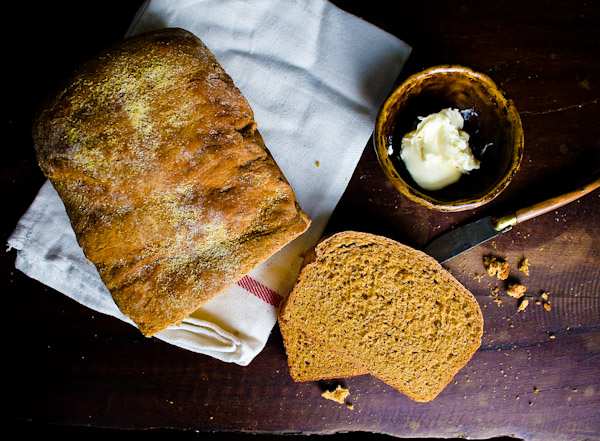 With slender baguette pans, gurgling jars of sourdough starter, and an array of silky flours, my father was a talented bread baker. One of his specialties, the one I hold dearest, was Anadama Bread. As a kid, the lore of the New England fisherman who threw his bowl of molasses-sweetened cornmeal mush at his bread baking wife, exclaiming "Anna, damn ya!", mixing the ingredients and thus giving birth to this accidental recipe was consistently intriguing, and consistently an excuse to use an unapproved word. But the flavor, aroma, and character of this bread, far outweighed it's value for smut-mouthed opportunities. With slender baguette pans, gurgling jars of sourdough starter, and an array of silky flours, my father was a talented bread baker. One of his specialties, the one I hold dearest, was Anadama Bread. As a kid, the lore of the New England fisherman who threw his bowl of molasses-sweetened cornmeal mush at his bread baking wife, exclaiming "Anna, damn ya!", mixing the ingredients and thus giving birth to this accidental recipe was consistently intriguing, and consistently an excuse to use an unapproved word. But the flavor, aroma, and character of this bread, far outweighed it's value for smut-mouthed opportunities.A yeasty moist bread, it is made hearty with the addition of cornmeal, and sweet and tangy with the addition of molasses. This is the quintessential eat at least a half a loaf slathered in butter right out of the oven as soon as it is cool enough to slice homemade bread. Chewy, with a pillowy crumb, this also makes the best, the best, toast. The sugars in the bread form a delicate crust all over the surface, providing just enough slight crunch before giving way to a slightly sweet supple center. It also makes an amazing sandwich. As it is baking, largely thanks to the molasses, the bread will perfume your home with a distinct comforting gorgeousness, certain to lay tracks for intense sense-memory experiences decades from now. As has absolutely proven true for me. (more…) | ||||||||||||||||
 Soon after I finished culinary school a wise and wonderful chef and cookbook author asked me, as I was first meeting her, what kind of food do you cook? I was a little stumped. I was just out of a year of cooking little other than classical french cuisine. And a year of cooking predetermined recipes that I had to master, in order to learn said classical french cuisine. Eating locally, and seasonally, and knowing where my ingredients come from are always paramount when I cook, but beyond "farm to table", I didn't really have a ready response as far as my personal style with food. But after some introspection, I think at least one of my approaches to cooking, though perhaps somewhat obvious, is to get the finest possible ingredients, at the height of their season or freshness, from the best possible sources, and then: get out of their way. Or compliment their strengths that are already therein, rather than transforming or imposing. At least that's the goal. How can I possibly improve upon a homegrown, just-picked Jaune Flamme heirloom tomato, drizzled with exceptional olive oil This recipe does just that. Blood oranges are in season right now, and at the height of their glorious flavor. They are a stunning deep garnet color, with a taste that ranges from orange to raspberry to grape. A phenomenal homemade pastry crust, along with the roasted fruit, this galette reminds me a lot of my great grandmother's jam-filled thumbprint cookies, or a very sophisticated Pop-Tart. And brings some necessary brightness to a dull week of winter. (more…) | ||||||||||||||||
 This remarkably simple, and remarkably comforting recipe has always been a part of our holiday meals. When she first started making it, my grandmother used to enjoy quizzing unsuspecting guests as to what the star ingredient was in the soup. It is so mellow, and balanced, and not cluttered with leek or potato, that it is actually hard to discern that it is simply the lowly turnip. As a kid we would slurp down bowl after bowl of this creamy winter favorite. It was always present at cold weather dinner parties thrown by my parents, as surprisingly, it was a safe bet to please a large crowd. Again, not attributes, if I think about it now, I would consider assigning to this particular vegetable. But try this one! It is wonderful, and makes me joyfully lug home heavy bags of turnips (white or purple) as soon as they arrive at the farm stands. It is a warm and soulful start to most of our Thanksgiving meals together.
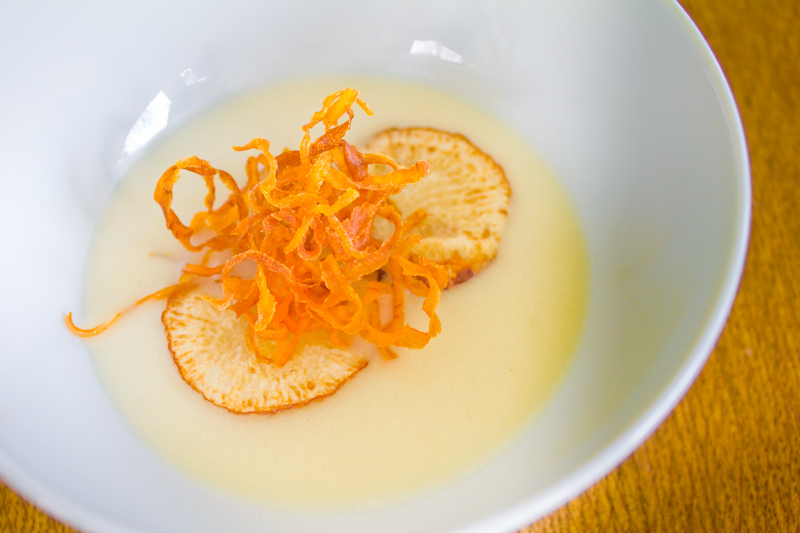 | ||||||||||||||||||||||
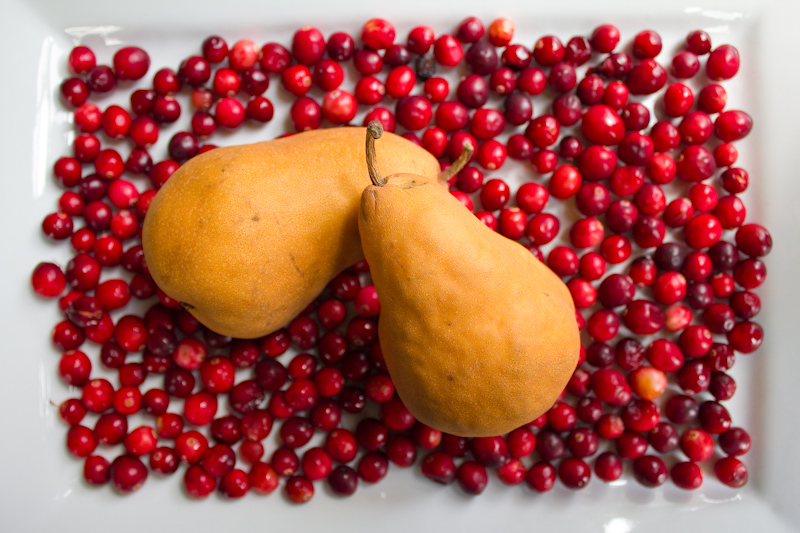 I was recently asked to be a guest blogger for the wonderful heart-healthy food blog What Would Cathy Eat? Cathy asked for a cranberry sauce for thanksgiving, that was less sweet than usual. Here is the post and recipe below, in case you hadn't caught it on her site. --Catie For years, as a child at the 1970’s American thanksgiving table, I too believed that cranberry sauce was always cylindrically shaped, with neatly organized parallel rings encompassing it. That is not to say that my family were not great cooks, slaving for days before over dozens of homemade recipes. However, somehow that little wobbly dish seemed like a required fixture on the holiday table, that someone very well might miss if absent. Though it felt far from “food” and as a result, usually went untouched. It also seemed somewhat sacrilegious to think of smearing that puckeringly sweet jelly on that luscious turkey meat that I had waited an entire year for. How could this red goo possibly improve on roasted perfection? So I took a crack at it myself this year. Drawing on ideas of recipes like Duck with a Sour Cherry Sauce, or a deeply flavored Indian Chutney stirred into a chicken salad, ending up with a condiment that I would actually want to add to my turkey to add to it’s flavor. I eliminated a lot of the sugar found it most recipes (up to a cup of white sugar was common). It’s on the tart end of the spectrum, but balanced, with lovely spice notes that will be beautiful with the richness of the meat. I think it would also be outstanding dolloped on top of a bowl of Greek yogurt for breakfast the next morning, and though not yet tested, I imagine pretty great pureed and used as a base for a holiday prosecco cocktail.
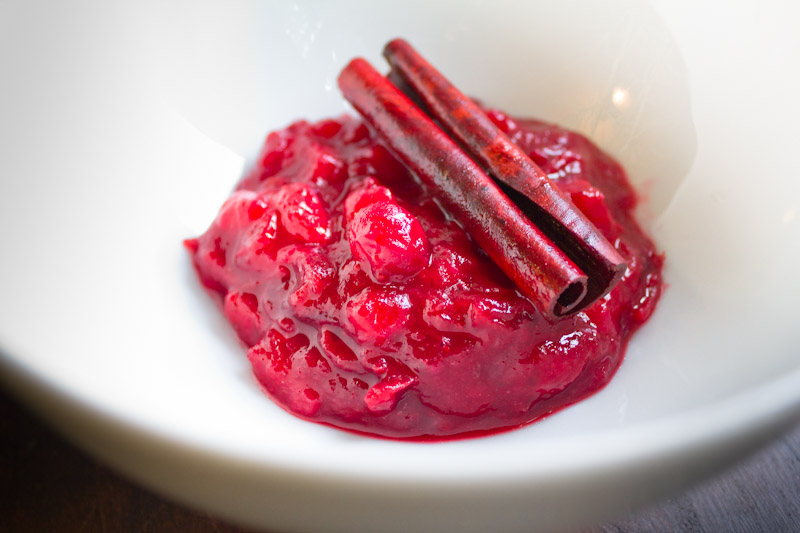 | ||||||||||||||||||||||
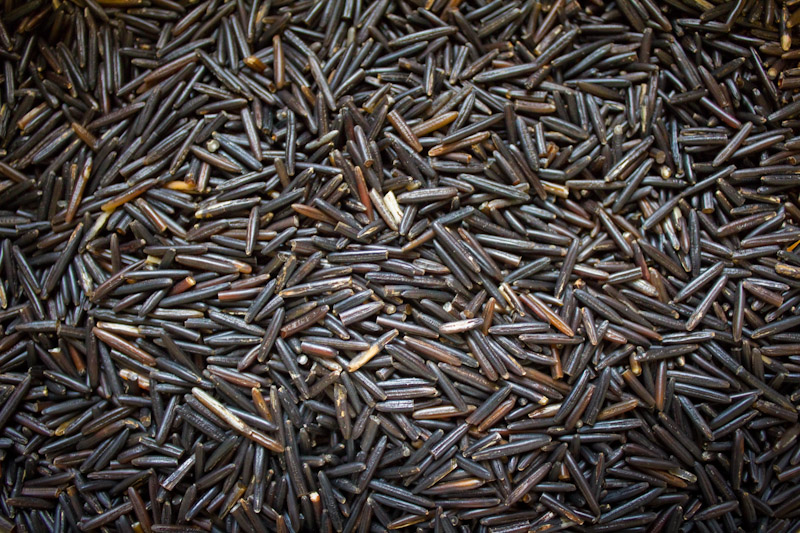 My friend, and great cook, Cathy Elton asked me to contribute to a thanksgiving recipe series on her heart-healthy blog "What Would Cathy Eat?". One recipe she requested was a "stuffing made without meat or butter". Not an intuitive leap for this French Culinary Institute-trained, duck-fat-loving chef. I started musing on wild rice. Deeply flavored, elegant, and a little unexpected, it is also a really smart choice in the middle of a seemingly endless table of fatty simple carbohydrates. This nutty whole grain is actually not technically rice, but rather a seed from the aquatic grasses surrounding fresh water lakes in northern North America. It has twice the protein of brown rice, and almost eight times the protein of white, serving up 6.5 grams in one cooked cup, with 3 grams of fiber. There is a rich mysterious aroma to the grains, reminiscent of tannins and black tea. I added tart dried cranberries and apricots, woken up with some light vinegar, which will offset the richness of turkey and gravy. This dish would also be wonderful for lunch the next day, as a cold rice salad with leftover pieces of turkey added, or made with chicken any time during the year. And with this smart side dish choice, just think of all the extra pie you can justify.
 | ||||||||||||||||||||||
 The start of the holiday season in my home growing up was always marked by the arrival of a substantial pile of dogeared food magazines next to both sides of my parents' bed, as they hunted for recipe inspiration in the weeks leading up to Thanksgiving. That tradition has definitely lived on with me (and generally does so year-round), as well as the 2.0 version, in the form of a ever-growing file of bookmarked recipes on my computer. As I start to put 2010's menu together, here are a few superstar Thanksgiving recipes that I return to again and again, from those treasured November issues. Mushroom Soup with Hazelnut Gremolata. A deeply flavored, incredibly rich, yet cream-less soup, that makes you sing the praises of all things mushroom. Butternut Squash and Polenta Gratin. A gorgeous, bright orange, creamy revelation. Yeast-Raised Cornbread Rolls with Corn Kernels and Chives. The perfect Thanksgiving breadbasket. Would also make outstanding stuffing. Duck-Fat Rubbed Roast Turkey. Not only was this recipe developed by my favorite locavore chef, Bill Telepan, but it cooks in AN HOUR AND A HALF, for a 14 lb turkey. Year after year it is the best turkey I've tasted, and I'll never use another method. And the opening up of oven space and time is a gift from the gods. Pear, Prosecco and Black Pepper Cocktail. This complex, yet refreshing, holiday cocktail is totally unexpected, but not intimidatingly weird. | ||||||||||||||||
 My dear friend from graduate school, January LaVoy, just opened her luminous performance in Arthur Kopit's Wings, off-Broadway at the Second Stage Theater this past weekend. When I had the chance to see the show, I thought, "Anyone can bring flowers...I'll lug down a just-picked squash from our garden." I mean, who wouldn't want to be greeted with that in the lobby??? (and have to deal with it on the subway home?) 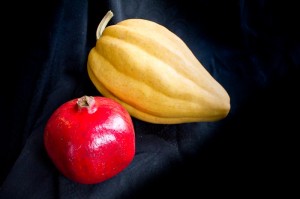 This particular winter squash is an heirloom variety, called Thelma Sanders Sweet Potato Squash. I bought these seeds specifically because it was described by Seed Savers' Exchange as their "favorite two-serving baking squash". I envisioned romantic squash dates all winter long. It is pale orange like a butternut, but tear-shaped and ribbed like an acorn. It has a creamy, golden flesh, that works in recipes for either variety. So, as promised, here is a recipe of something to do with said squash, especially for our big star. And Wings runs through November 21st. If you are in NYC, don't miss this one.
 | ||||||||||||||||||||||
Though apples are excellent long-keepers, and will be around for months at the markets, they never taste better to me than right now--sun still warm in the sky, "transition" jacket getting pulled out of the closet, leaves crunching beneath my feet, and halloween fast approaching.
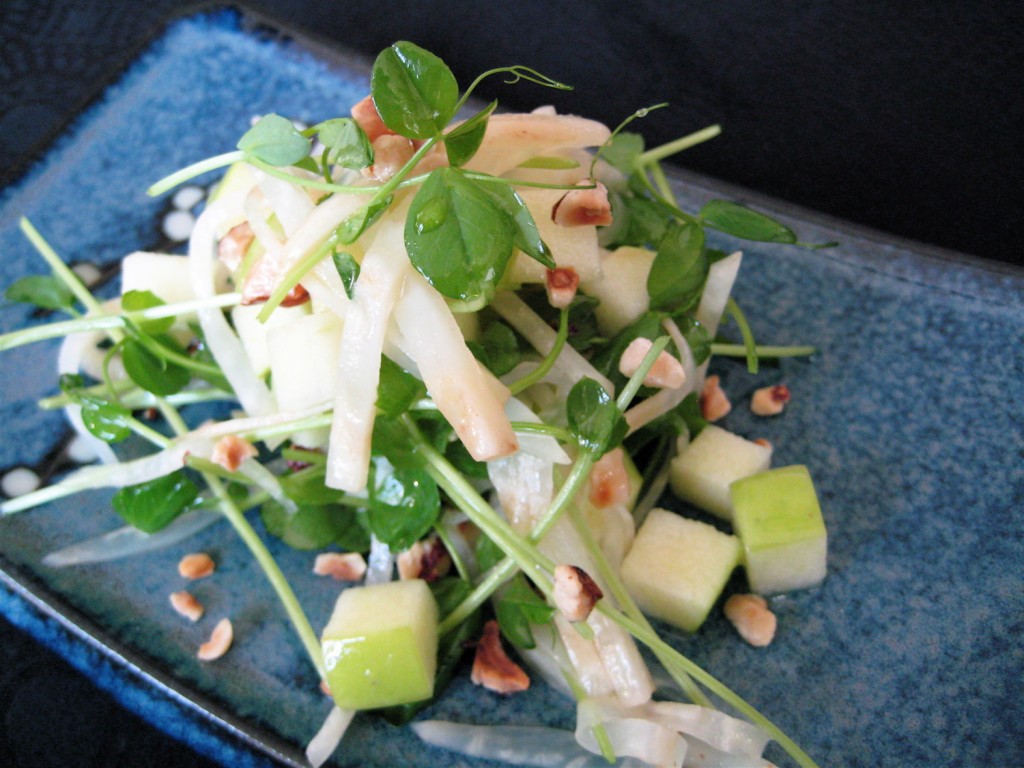 Grab a few extra apples at the farmers' market this week, and try this salad I posted in the early spring. Pea shoots might still be available, but if not, late season salad greens, particularly arugula, would be a great addition. Pea Shoot, Celeriac, Apple and Hazelnut Salad | ||||||||||||||||
On a trip to the farmers market it doesn't serve you to bring a list or to have rigid expectations. The most effective shopping there is always done by just discovering what is the very best of this week's offerings. As mentioned before, that can sometime be rough in the less produce-friendly times of year.
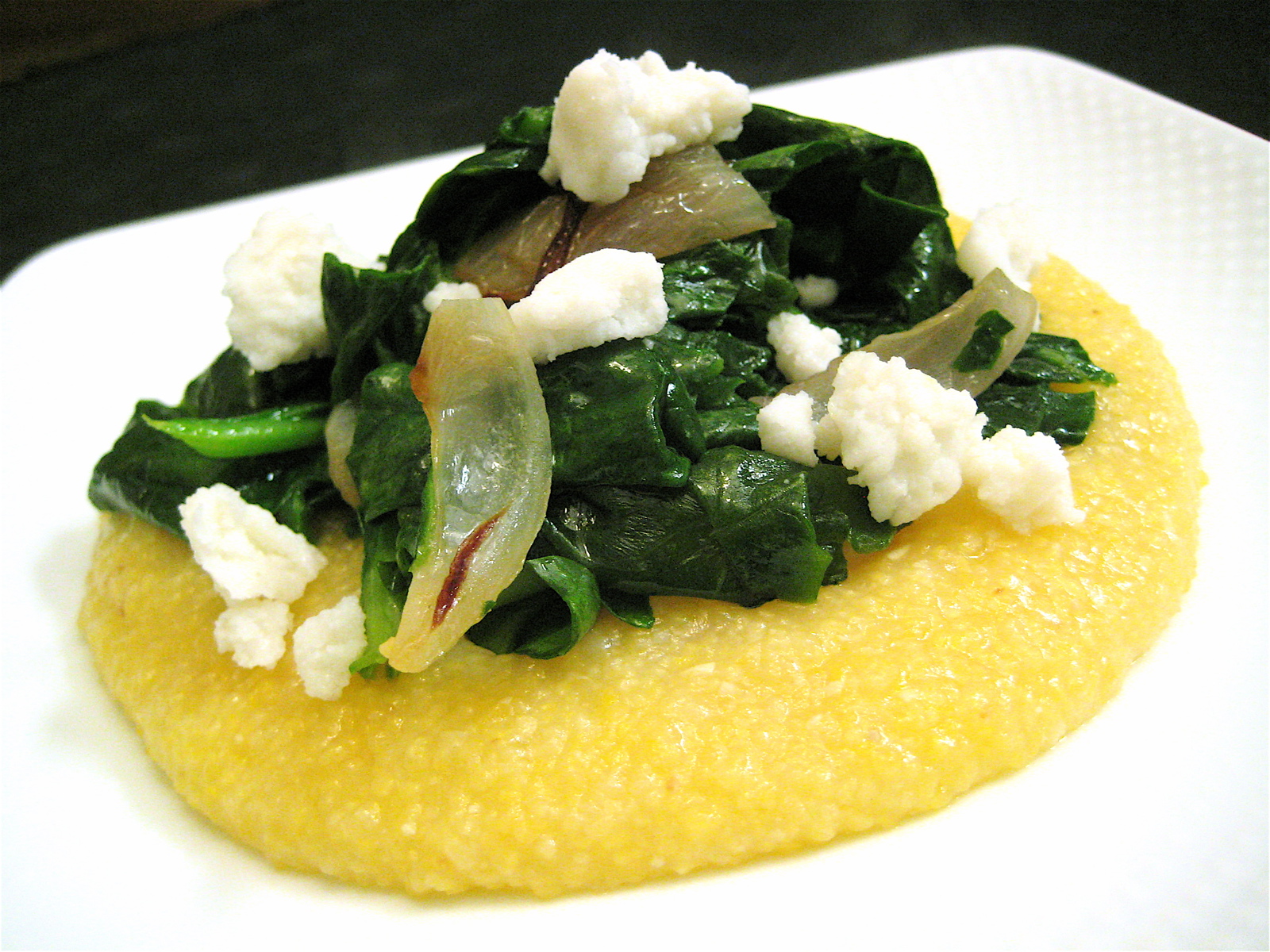 This week the stars, or farmers, seemed to align. There are a few bonuses of spring starting to show up, and enough cold storage winter vegetables left to anchor a recipe. I found sweet, plump shallots, an abundance of hearty greens, luscious queso blanc made from goats milk, and had a few bags of organic polenta from a farm in Ithaca, NY, I had stocked up on during a previous market day. They all came together beautifully in this comforting, yet bright dish. A great vegetarian meal, or elegant side dish, that could be easily expanded to a more substantial meal by adding some braised chicken thighs or aromatic local sausages to the mix on top.   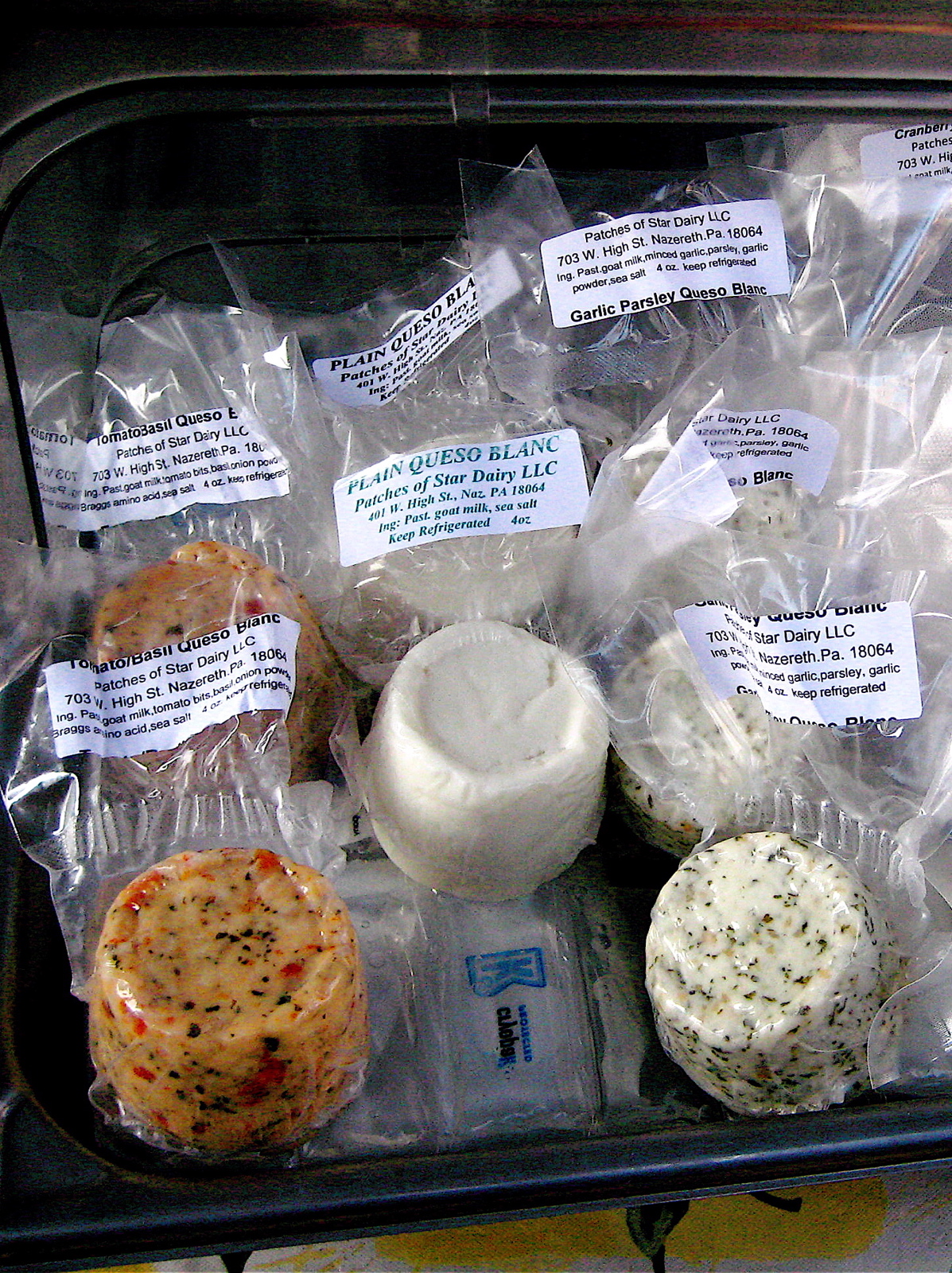 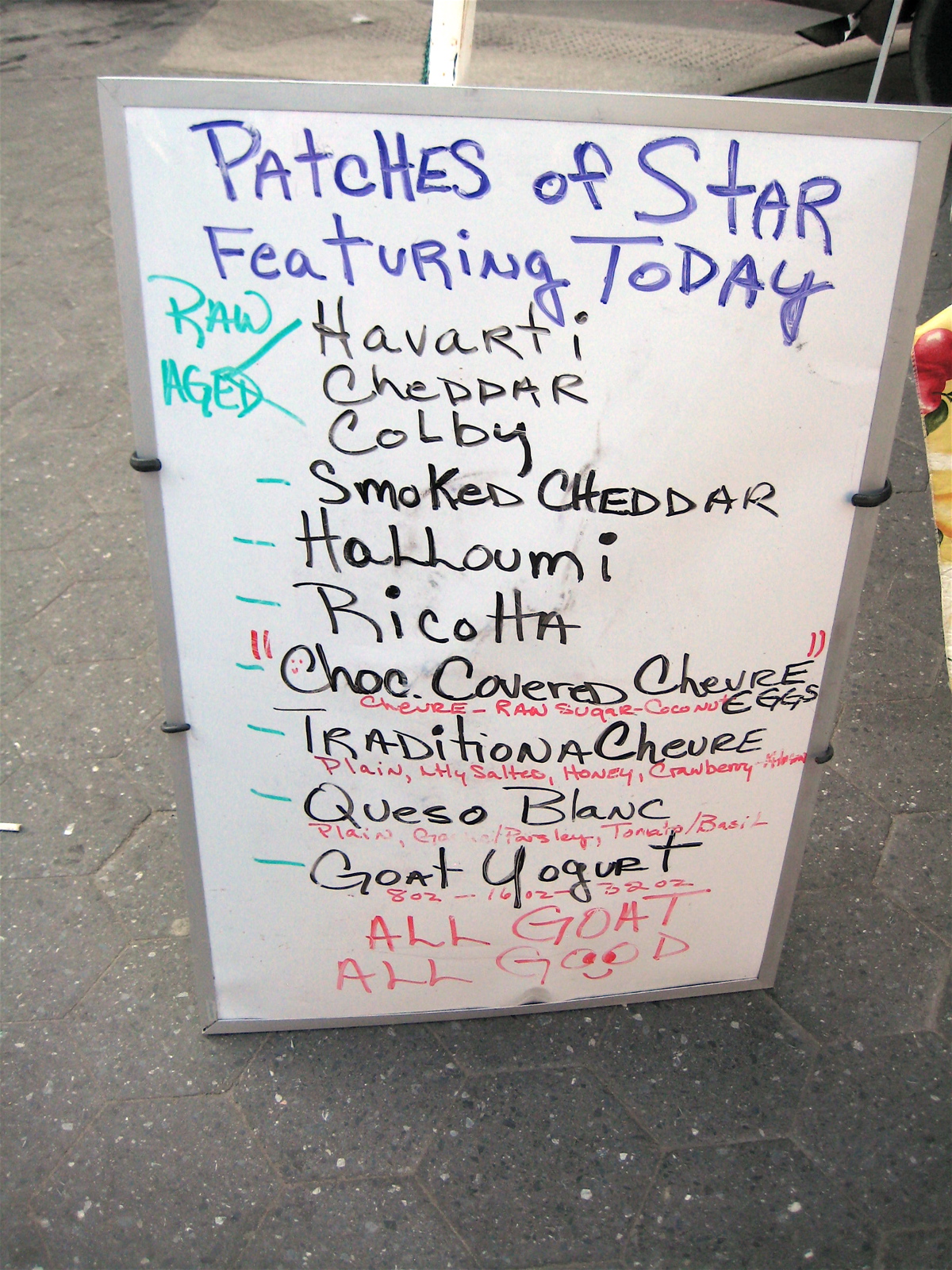
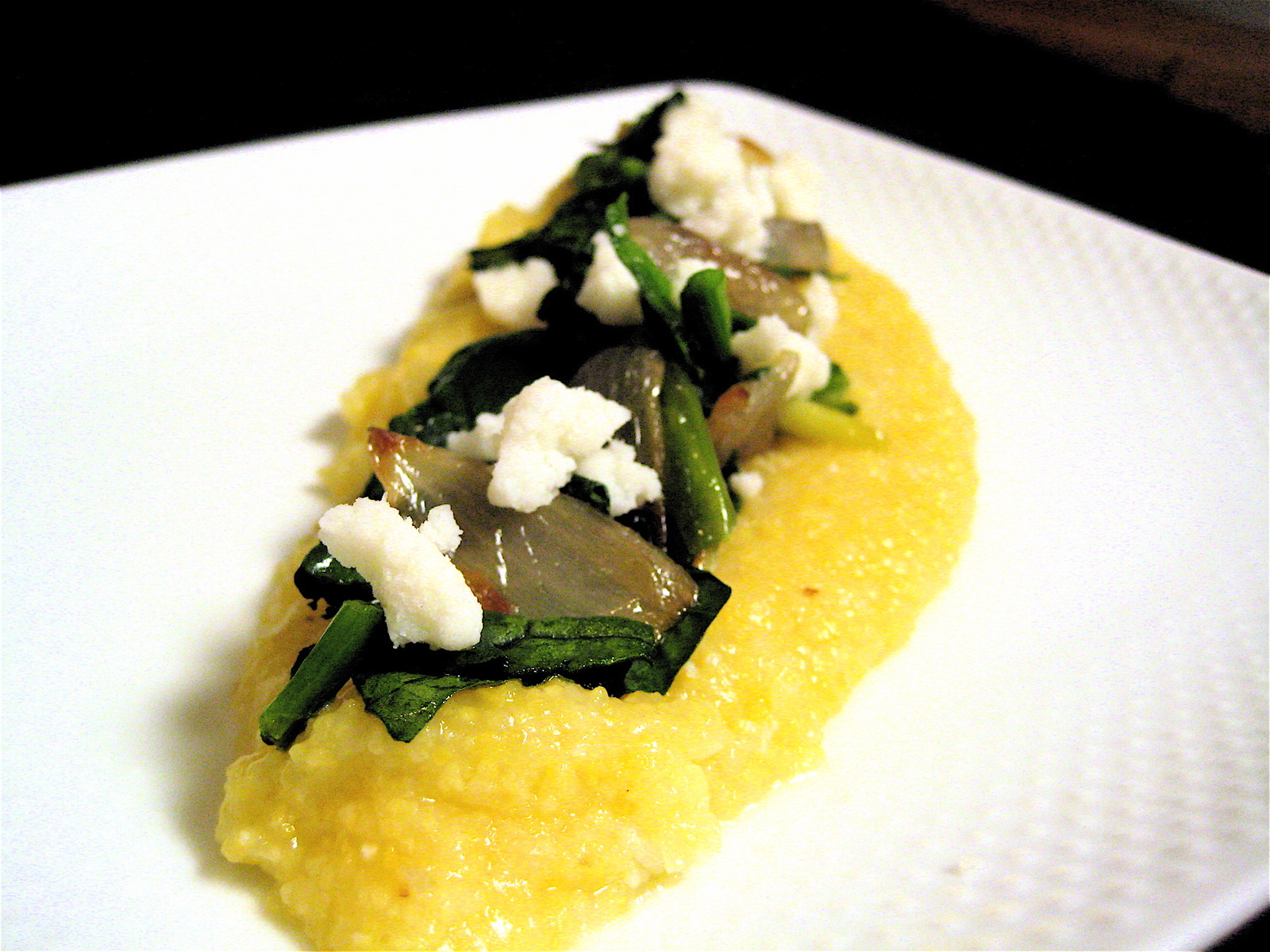 | ||||||||||||||||||||||
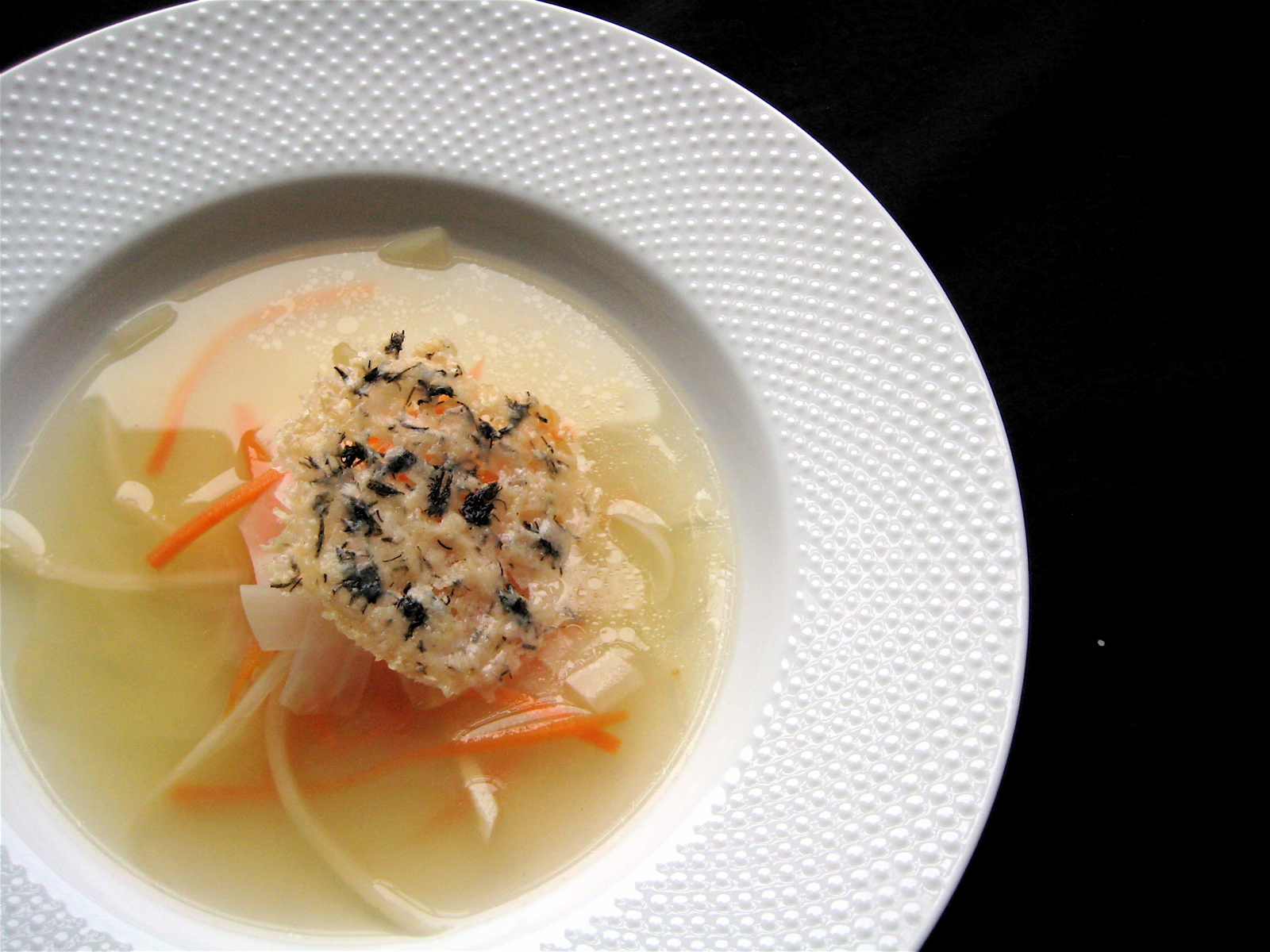 After the 3+ feet of snow we had this past week, I find it impossible to believe that I am watching even more flurries outside today. The blizzard this week caused the farmers, whose work ethic is only outdone by their good sense, to not come to NYC for the greenmarket this Friday. Union Square, though stunning all decked out in white, was empty. Fortunately last week I bought a lot of long-keeping root vegetables. Perfect tools for a shut-in day upstate, with no takeout around for miles. 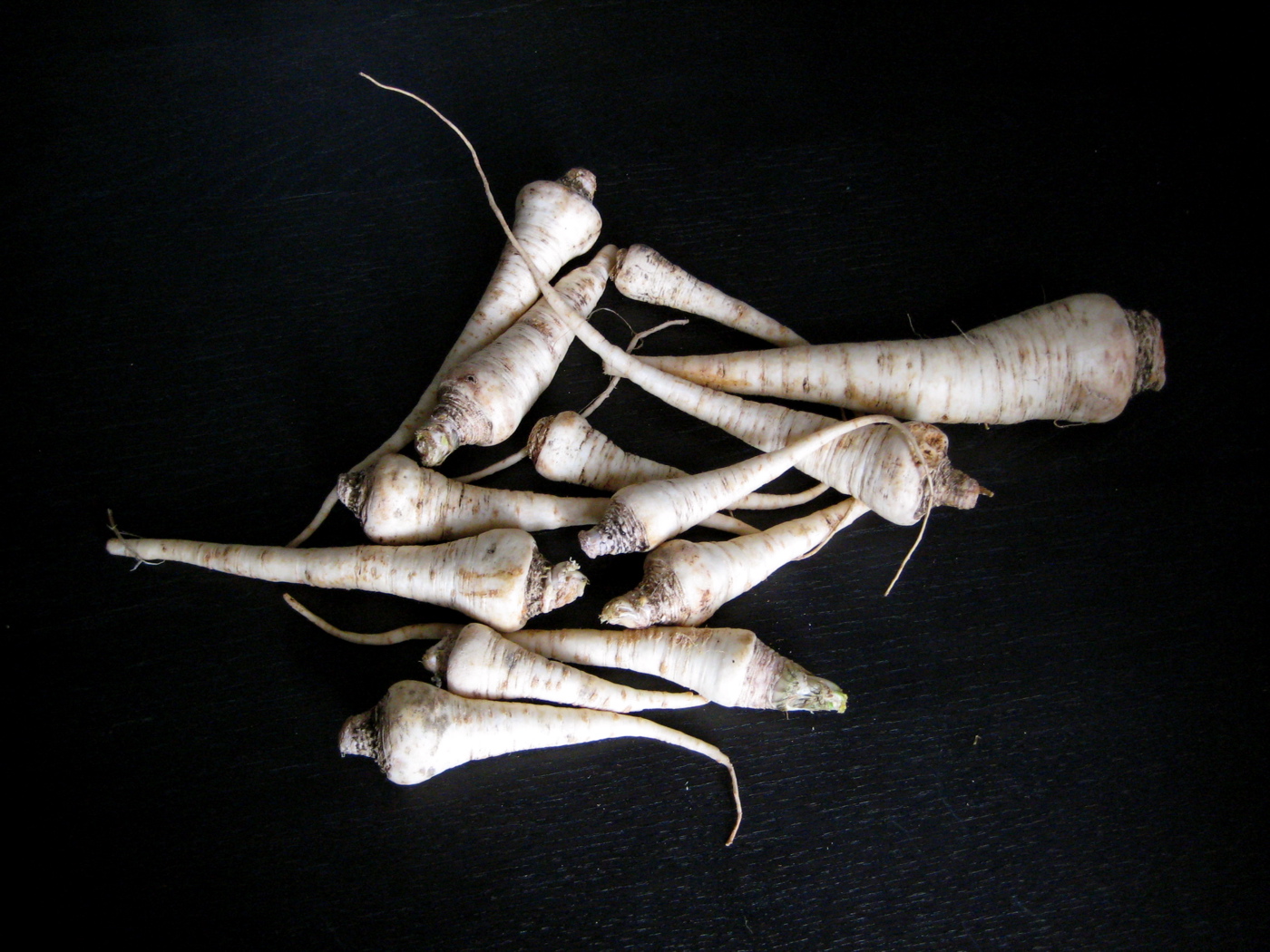 WINTER CHICKEN “NOODLE” SOUP WITH DILL PARMESAN CRISPS By Catie Serves 4 For the Soup: 2 quarts Chicken Stock 1 medium Celeriac, about 6 oz, peeled and shredded or sliced thin 2 medium Parsnips, about 6 oz, peeled and shredded or sliced thin 3-4 Carrots, about 6 oz, peeled and shredded or sliced thin salt to taste For the Crisps: 1 packed cup Parmesan Cheese, grated 1 tsp Fresh Dill, finely chopped (I used dill I had frozen from our garden this summer) For the Crisps: Preheat oven to 350° F. Thoroughly mix grated parmesan and fresh dill together in a small bowl. Make small mounds (about 2 TBS each) of the cheese mixture evenly spaced on a silpat mat on a sheet pan. Gently flatten each mound into a disc shape—the cheese won’t spread much beyond where you place it. You should have about 6 discs. 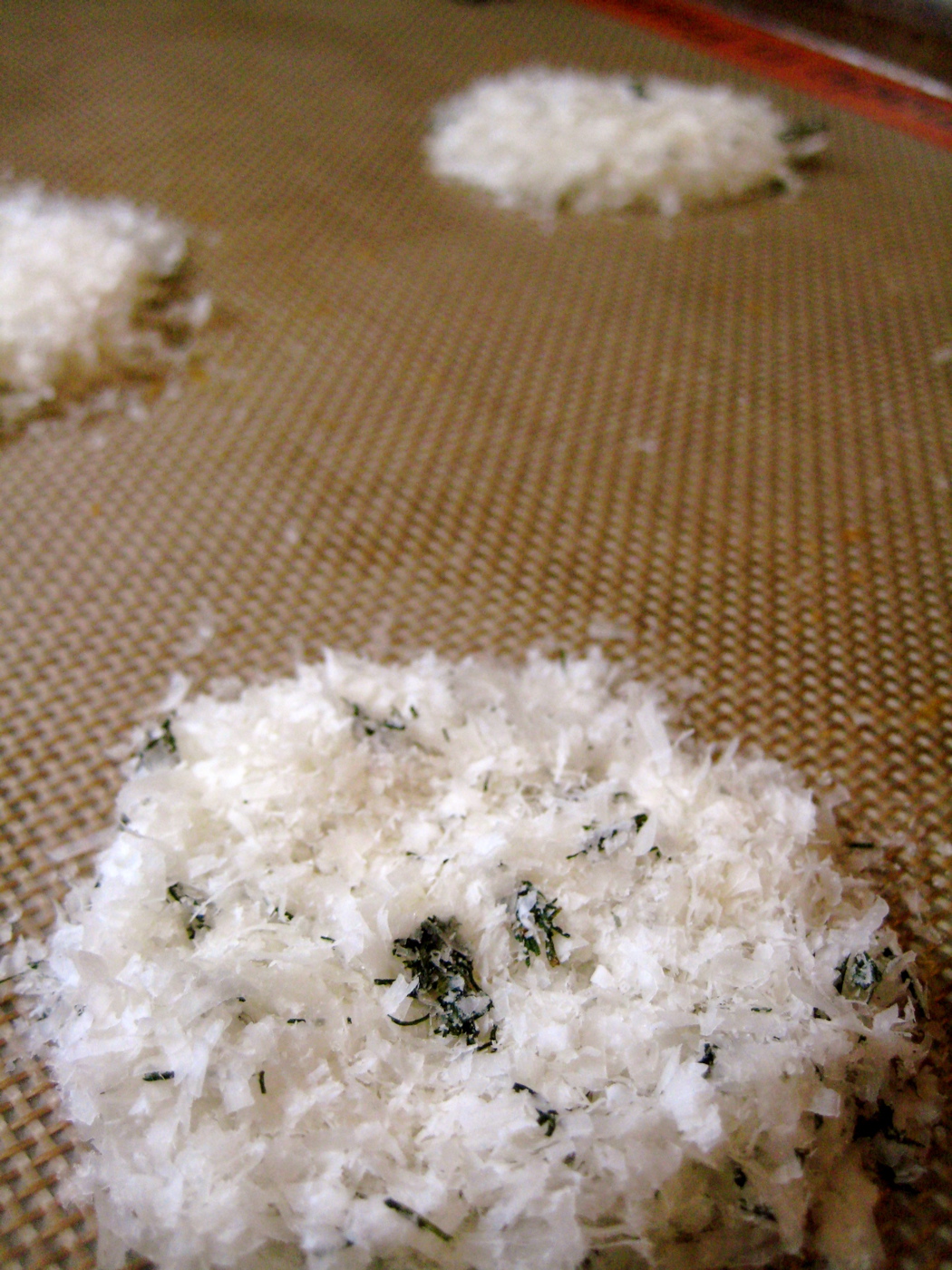 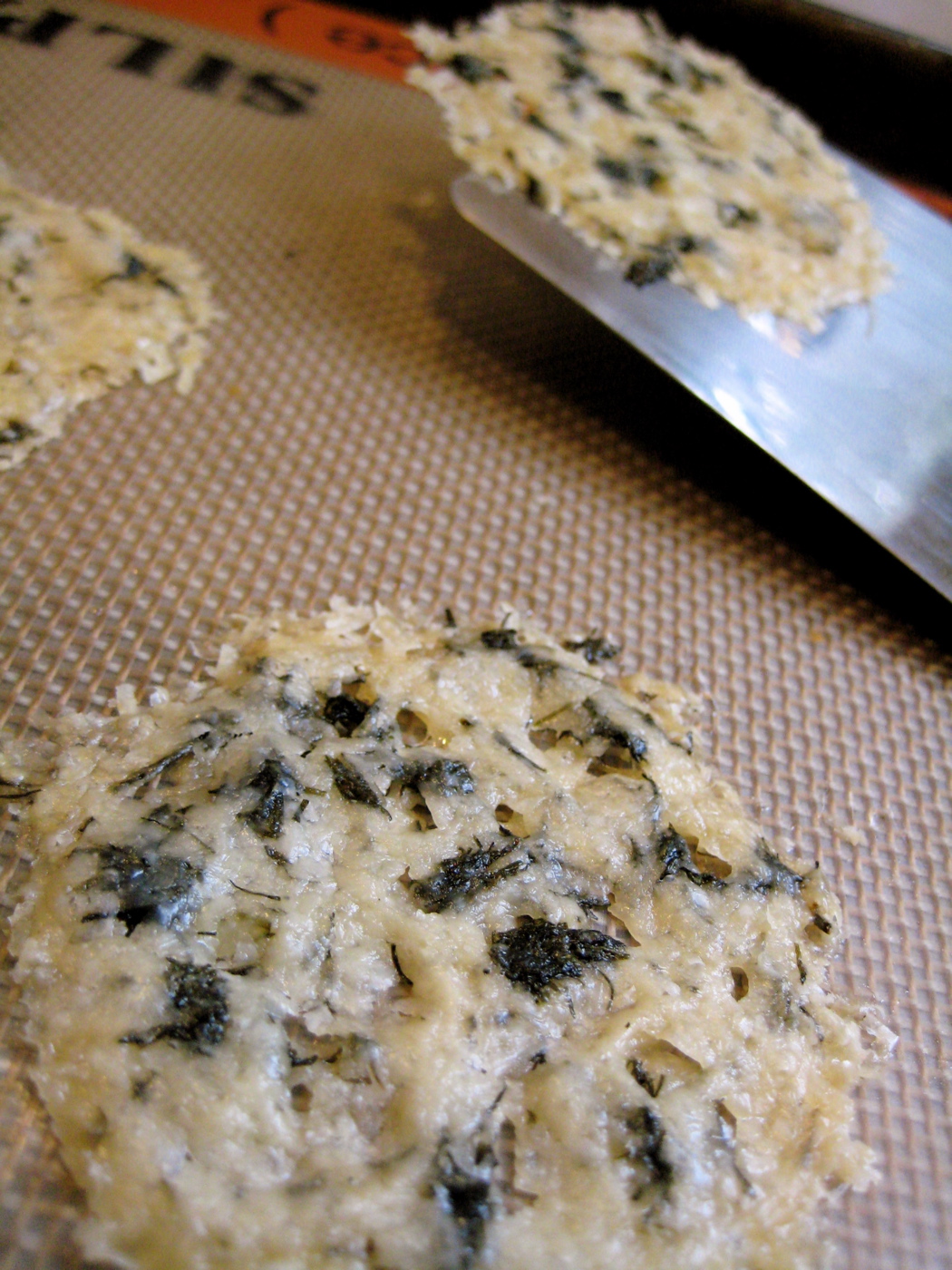 Bake at 350° F for about 8 minutes—just until the melted cheese has reached the center of the discs, and the edges are just starting to turn golden. Don’t over cook, or they tend to get bitter. Let the crisps cool on the silpat. Gently remove with a thin spatula. For the Soup: 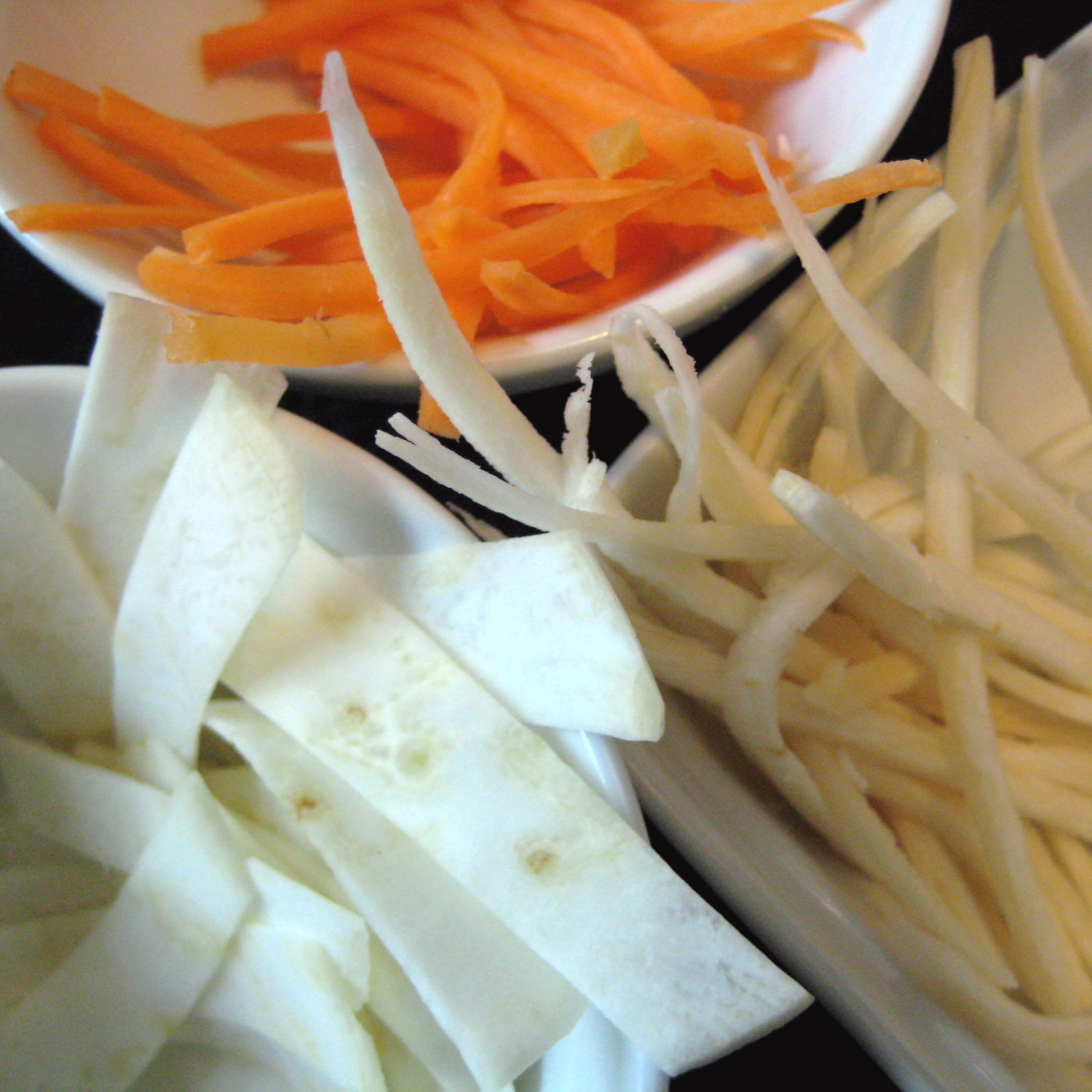 The vegetables can be cut in a variety of ways. The easiest is shredding them all in the food processor with the large grating blade. However, you can also use a mandoline for long thin strips, julienne them by hand, or (as I did with the celeriac this time) thinly slice with a vegetable peeler—which ended up looking the most like noodles. It is pretty to slice them in a few different ways, particularly if you have two vegetables that are the same color. The vegetables can be cut in a variety of ways. The easiest is shredding them all in the food processor with the large grating blade. However, you can also use a mandoline for long thin strips, julienne them by hand, or (as I did with the celeriac this time) thinly slice with a vegetable peeler—which ended up looking the most like noodles. It is pretty to slice them in a few different ways, particularly if you have two vegetables that are the same color.(The most important thing is to make sure that all the vegetables are relatively similar in thickness once they are cut, so they cook evenly. You can certainly stagger putting them into the pot if you have larger cuts, so they can all be finished at the same time.) Heat the chicken stock over medium heat to a gentle boil. Add the shredded vegetables. Bring the stock back to a boil, and reduce to a simmer until the vegetables are al dente—about 4 minutes total. Season with salt to taste. Portion into four bowls, and mound vegetables slightly in the center. Top with a Dill Parmesan Crisp. 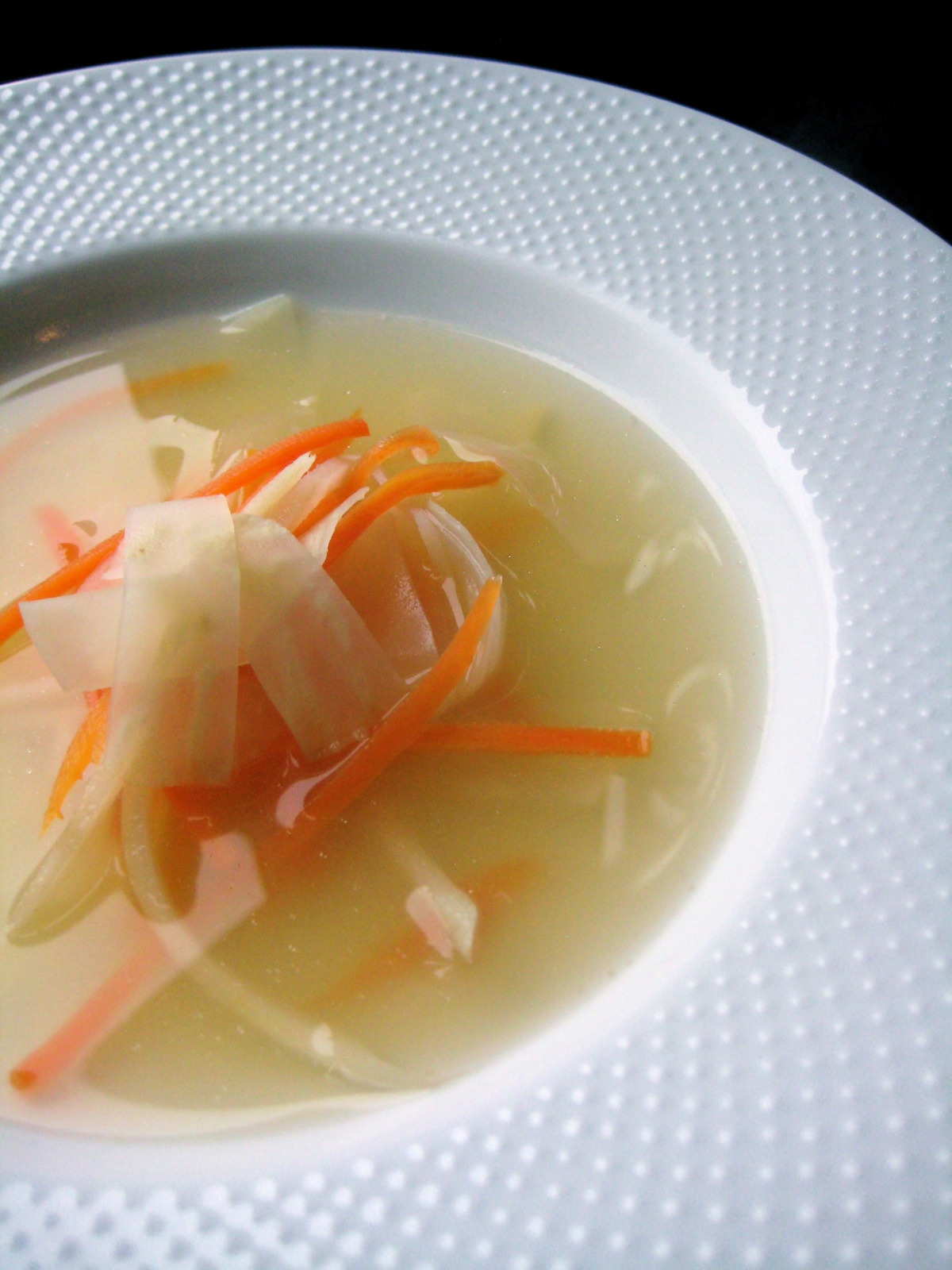 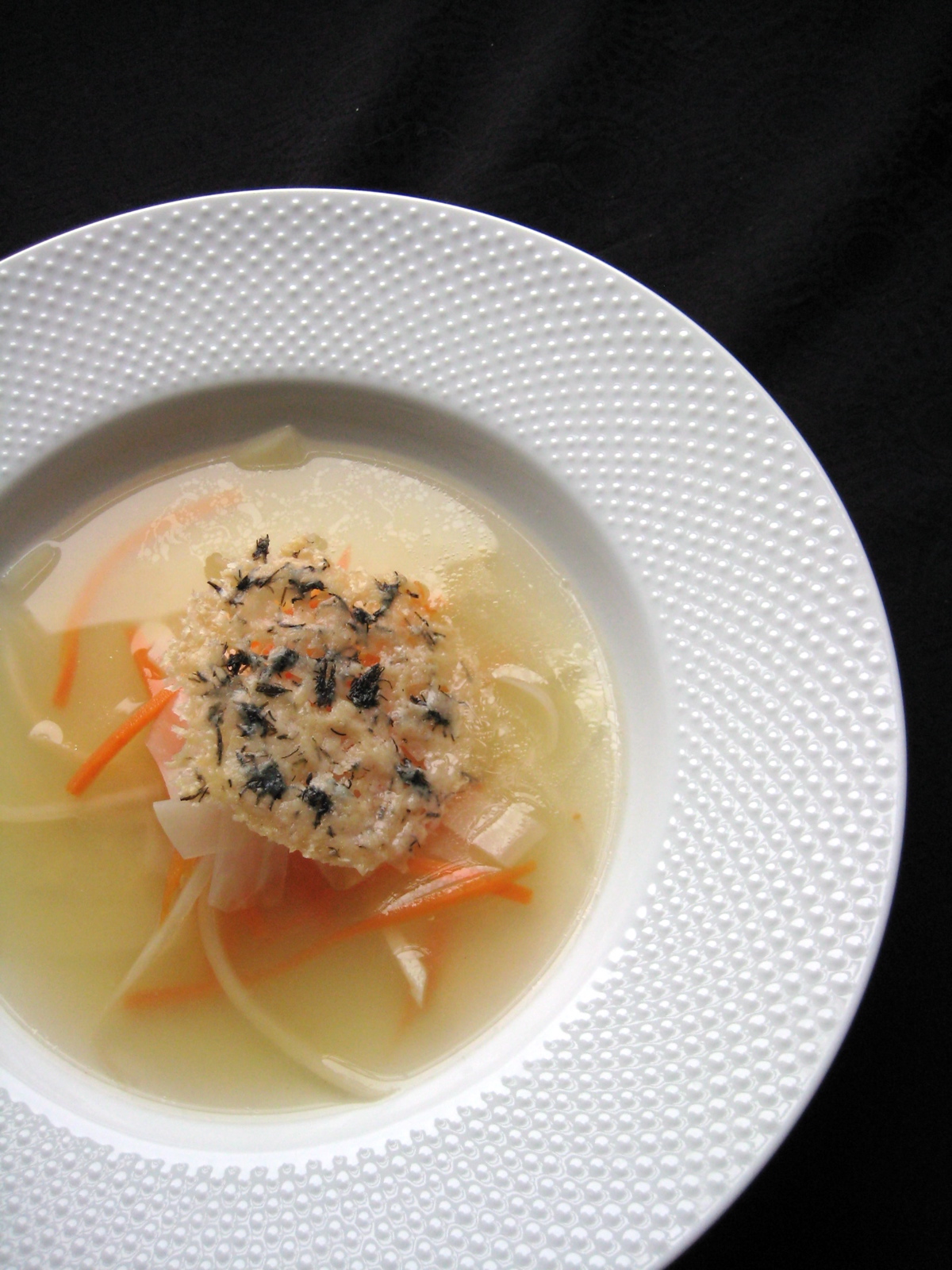 | ||||||||||||||||
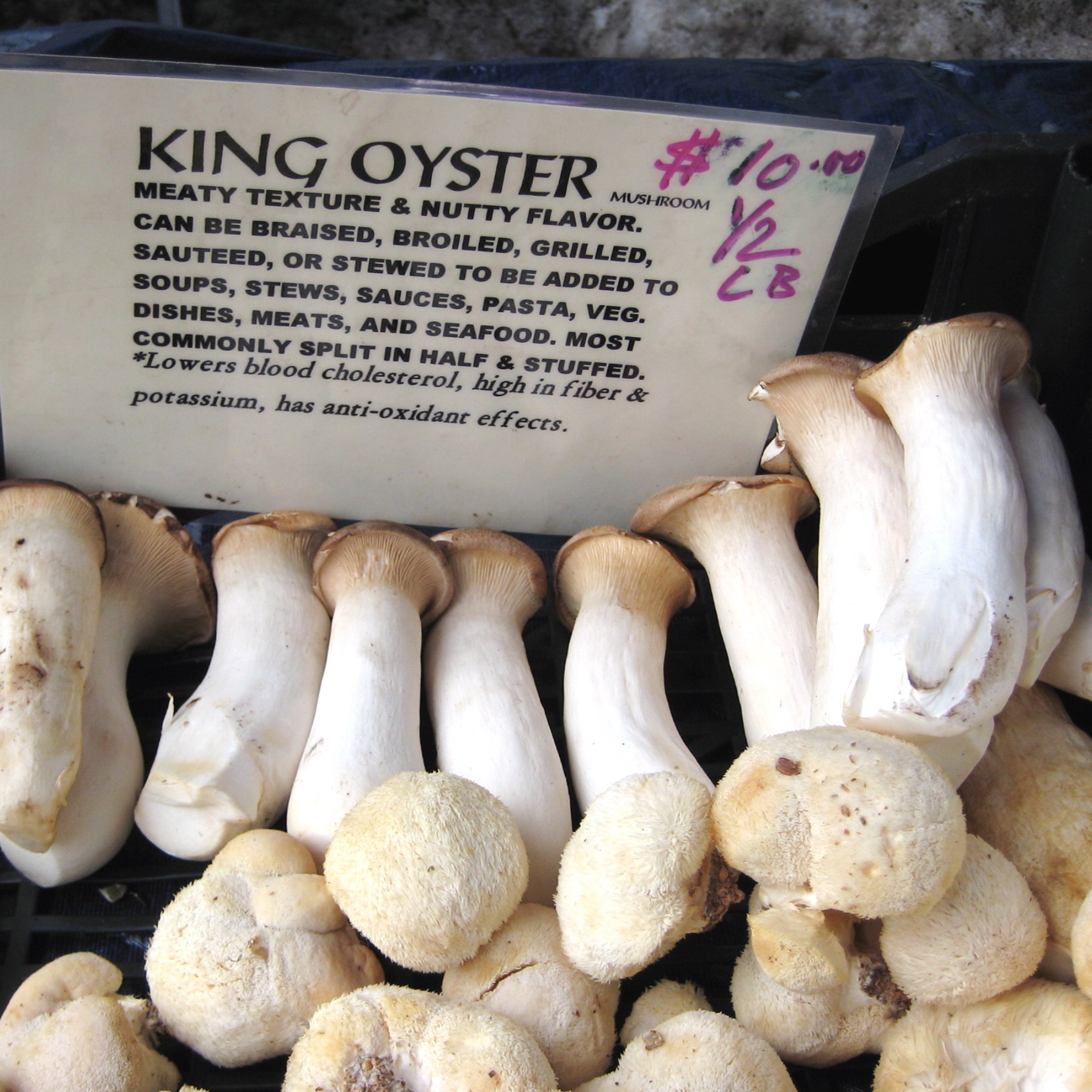 So the very first meal of the blog, and of this year’s project: to cook from the farmers market, or my garden, and post recipes every week. So the very first meal of the blog, and of this year’s project: to cook from the farmers market, or my garden, and post recipes every week.As mentioned previously, this week’s trip to the Union Square farmers market included finding some gorgeous king oyster mushrooms and kale. The first time I saw king oyster mushrooms in the market about a year ago I was so intrigued by their size and shape. These were about 7 inches long and nearly two inches in diameter. I tend to be drawn to the geometrics and architecture of food, was excited by the prospect of being able to be able to have substantial pieces of mushroom in new shapes—large slabs, long matchsticks. Not to mention the lovely, delicate, buttery flavor and texture of these beauties. Though not local, we are currently right in the middle of blood orange season. (What Are Blood Oranges) The ones I’ve been eating this week are intensely purple inside with a deep berry flavor. They are always startling to cut into, and offer great color and sweetness in both of these recipes. It is also worth mentioning that we get just the best chickens and eggs every week, all year, from the local farm Quails-R-Us Plus located in Honesdale, PA (Google Maps: Quails-R-US Plus). Everything we’ve had from them has been spectacular, and their chickens are particularly amazing. Super succulent and flavor you couldn’t begin to expect from a store bought bird. Grab a chicken from a farmer at the green market and this recipe will sing. 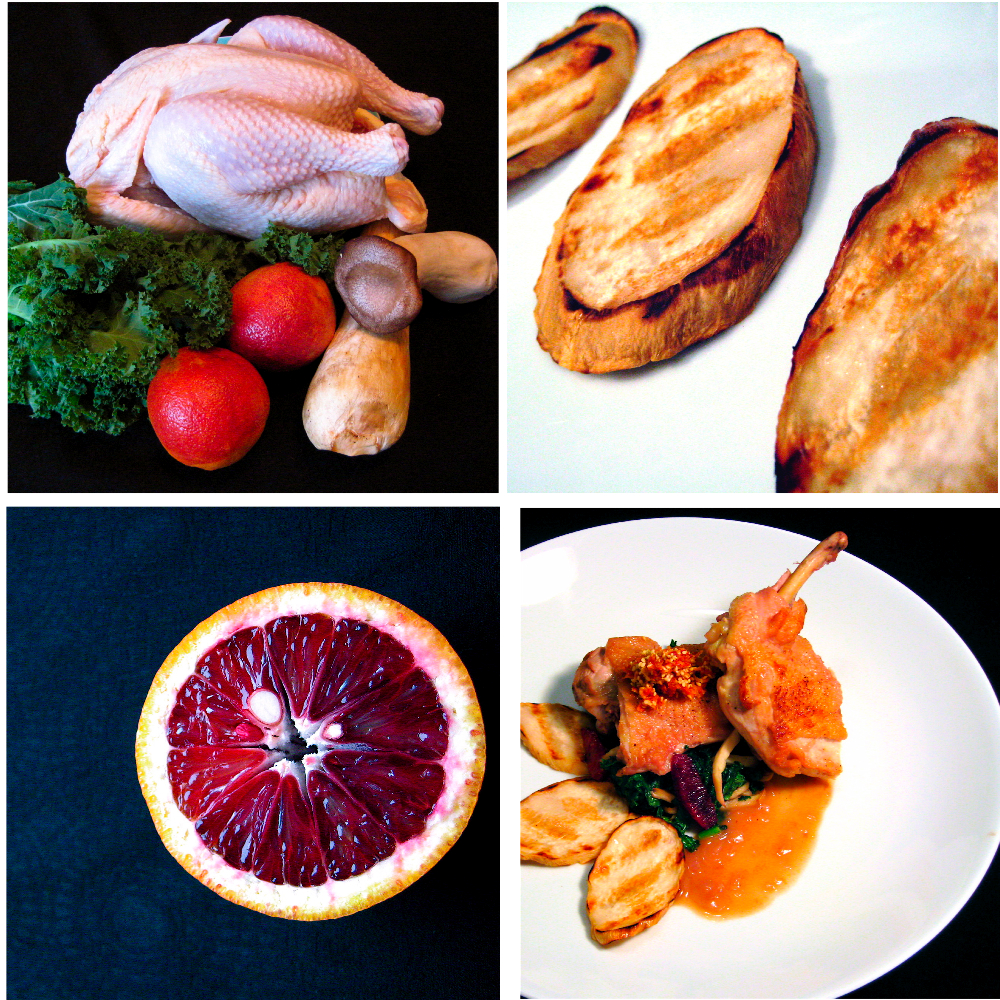 Blood Orange Braised Chicken, with Sesame Kale & King Oyster Mushrooms By Catie Serves 4 For the Chicken: 1 3-4 lb chicken, quartered 1 ½ TBS vegetable oil 2 shallots, thinly sliced 1 TBS blood orange zest (from about 2 oranges) 1 TBS toasted sesame seeds 1 cup blood orange juice (from about 4 oranges) 1 tsp sherry vinegar 1 ½ cup chicken stock salt & pepper Heat oil in a dutch oven, or heavy bottomed pot. Season the chicken pieces on each side. When oil is shimmering, put chicken, skin-side first, in pot in a single layer. Brown on both sides. Remove to a plate. Pour off all but 1 tsp of fat. Sauté the chopped shallot, until translucent and fragrant. Deglaze the pot with blood orange juice, and then sherry vinegar. Add chicken stock and bring to a simmer. Return chicken pieces to pot (liquid should be halfway up the sides of the pieces—add more stock or juice if needed). Cover and simmer gently until chicken pieces are cooked through, about 35 mins, depending on size of the chicken. Remove chicken from pot, and cover to keep warm. Reduce the sauce remaining in the pot slightly over medium heat. Mix sesame seeds and blood orange zest together gently in a bowl and set aside. For the Kale & Mushrooms: 1 TBS vegetable oil 4 cups, packed, thinly chopped kale 2 large King Oyster Mushrooms, about a pound (feel free to substitute) Segments from 2 blood oranges 1 ½ tsp sesame oil 1 TBS toasted sesame seeds salt Sliced the lower, thicker, part of the king oyster mushroom on the bias into large oval slices. Cut the top, narrower, portion into smaller pieces or matchsticks. While chicken is cooking, heat half of the oil in a large saute pan or brush grill or grill pan. Sauté or grill the large disks of the oyster mushrooms. Remove from heat, season, and set aside. Add the remaining oil to the pan. Sauté smaller, or matchstick pieces of mushrooms. When halfway cooked, add Kale and continue to sauté. Right at the end, throw in segments of blood orange and any juice that has accumulated from them. Just before serving, toss with toasted sesame seeds, dress with sesame oil and season to taste with salt. Serve a few slices of grilled mushroom on each plate, with a heap of sautéed vegetables, topped with a piece of chicken and surrounded by sauce. Lightly sprinkle with zest and sesame mixture. | ||||||||||||||||
|
{ welcome! }
 Catie Baumer Schwalb is a chef, food writer and photographer, who splits her life between the city and the country. Not too long ago Catie was a New York City based actress and playwright for more than a decade. She has her Master of Fine Arts from the National Theater Conservatory, and her Grand Diplôme in classic culinary arts from the French Culinary Institute in New York City.
... Read More ≫
Catie Baumer Schwalb is a chef, food writer and photographer, who splits her life between the city and the country. Not too long ago Catie was a New York City based actress and playwright for more than a decade. She has her Master of Fine Arts from the National Theater Conservatory, and her Grand Diplôme in classic culinary arts from the French Culinary Institute in New York City.
... Read More ≫{ get in touch }
{ what's new }
September 12, 2015
August 19, 2013
August 15, 2013
August 13, 2013
August 1, 2013
{ favorites }
{ archives }
Appetizers / Breads & Pastry / Breakfast / Cakes / Canning / Condiments / Dinner / DIY foods / Drinks / Fall / favorites / Grains / Holidays / Local / Noodles & Pasta / Pies & Tarts / Poultry / Salads / Seafood / Snacks / Soup / Spring / Summer / Sweets / Techniques / Vegetables / Vegetarian / Winter /
{ currently reading }
|



